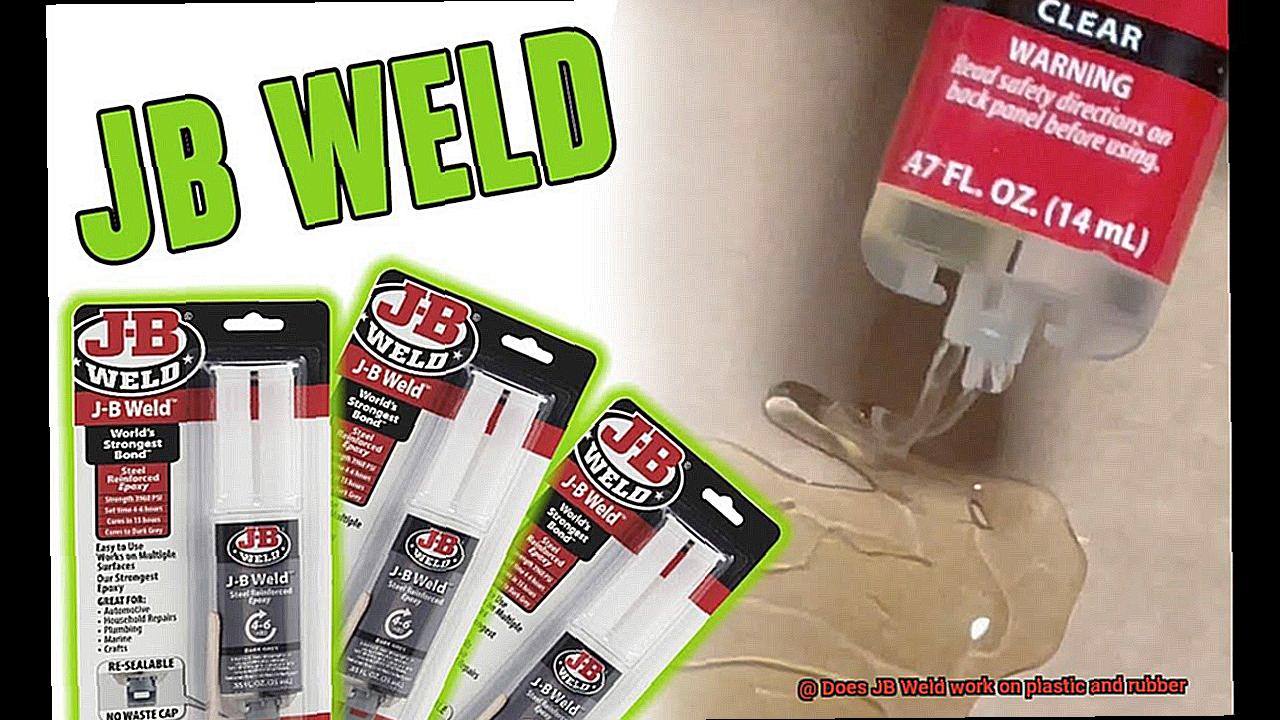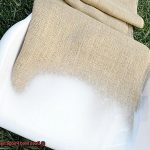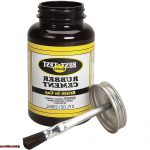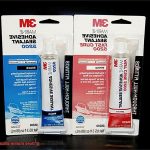Ever found yourself in a tight spot, desperately seeking a magical solution to mend your broken plastic or rubber treasures? Look no further, my friend, because we’re about to unveil the secrets of a true do-it-yourself superhero: JB Weld. This mighty adhesive has earned its stripes for its wide range of applications, but one burning question remains: does JB Weld truly work on plastic and rubber?
In this blog post, we’ll dive headfirst into the captivating world of JB Weld and explore its effectiveness in conquering repairs on these commonly used materials. Whether you’re a seasoned DIY enthusiast or simply enjoy saving a few bucks on pricey replacements, staying informed about the remarkable capabilities of JB Weld is sure to pique your interest.
From leaky car hoses to shattered plastic playthings, this versatile adhesive claims to deliver an instant fail-proof fix. But can JB Weld really be the powerful glue that breathes new life into our beloved belongings? Join us on this thrilling journey as we uncover the truth, lining up hard facts and personal experiences to paint a crystal-clear picture of what JB Weld can truly achieve on plastic and rubber surfaces.
So, kick back, relax, and prepare to be blown away as we dig deeper into the potential wonders of JB Weld – a bona fide savior for all your plastic and rubber mishaps.
What is JB Weld?
Contents
- 1 What is JB Weld?
- 2 Does JB Weld Work on Plastic?
- 3 Preparing Plastic for JB Weld
- 4 Types of Plastics Compatible with JB Weld
- 5 Does JB Weld Work on Rubber?
- 6 Adhesives Specifically Designed for Rubber
- 7 Tips for Using JB Weld on Plastic and Rubber
- 8 Alternatives to JB Weld for Bonding Plastic and Rubber
- 9 Conclusion
JB Weld, known as “the world’s strongest bond,” is a renowned epoxy adhesive prized for its exceptional bonding capabilities. Originally developed for metal repairs, JB Weld has become a go-to solution for a wide range of materials. In this comprehensive guide, we will explore the features and benefits of JB Weld, as well as provide detailed instructions for using it on plastic and rubber surfaces.
Features and Benefits of JB Weld:
- Versatility: JB Weld is a versatile adhesive that can be used on various materials, including metal, wood, ceramics, concrete, and more. This makes it an indispensable choice for DIY enthusiasts, hobbyists, and professionals alike.
- Impressive Tensile Strength: With its remarkable tensile strength, JB Weld can withstand substantial pulling or stretching forces without breaking or separating.
- Chemical, Water, and Temperature Resistance: JB Weld exhibits excellent resistance to chemicals, water, and temperature fluctuations, making it suitable for both indoor and outdoor applications. It can tolerate temperatures up to 550°F (287°C) once fully cured.
- Specialized Formulations: JB Weld offers specialized formulations tailored for specific applications, such as automotive repairs or bonding plastic and wood.
Using JB Weld on Plastic:
When using JB Weld on plastic surfaces, it is important to note that not all types of plastic are compatible. Rigid plastics like PVC, ABS, and fiberglass have higher surface energy and are more conducive to bonding with JB Weld. To ensure a successful bond, start by thoroughly cleaning the plastic surface with soap and water to remove any dirt or grease. Additionally, lightly sanding the surface with fine-grit sandpaper can enhance adhesion. Mix equal parts of the epoxy resin and hardener on a disposable surface before applying it to the prepared plastic surface using a putty knife or similar tool.
JB Weld and Rubber:
While JB Weld is effective on rigid plastics, it is generally not recommended for rubber surfaces. Rubber has low surface energy and high flexibility, making it challenging for the epoxy to create a strong bond. For bonding rubber materials, it is best to seek out specialized adhesives specifically formulated for this purpose.
Does JB Weld Work on Plastic?
This blog post answers the age-old question: Does JB Weld work on plastic? As an expert, I’ll provide you with all the information you need to rescue and revive your beloved plastic items.
Understanding the Factors:
Before diving into the details of using JB Weld on plastic, it’s crucial to understand the factors that come into play. Consider these key considerations:
Plastic Type:
Not all plastics are created equally. Some plastics bond more easily than others. Identify the type of plastic you’re working with before reaching for your tube of JB Weld. Common plastics like ABS, PVC, and polycarbonate generally respond well to JB Weld. However, polyethylene and polypropylene may require different adhesives due to their low surface energy.
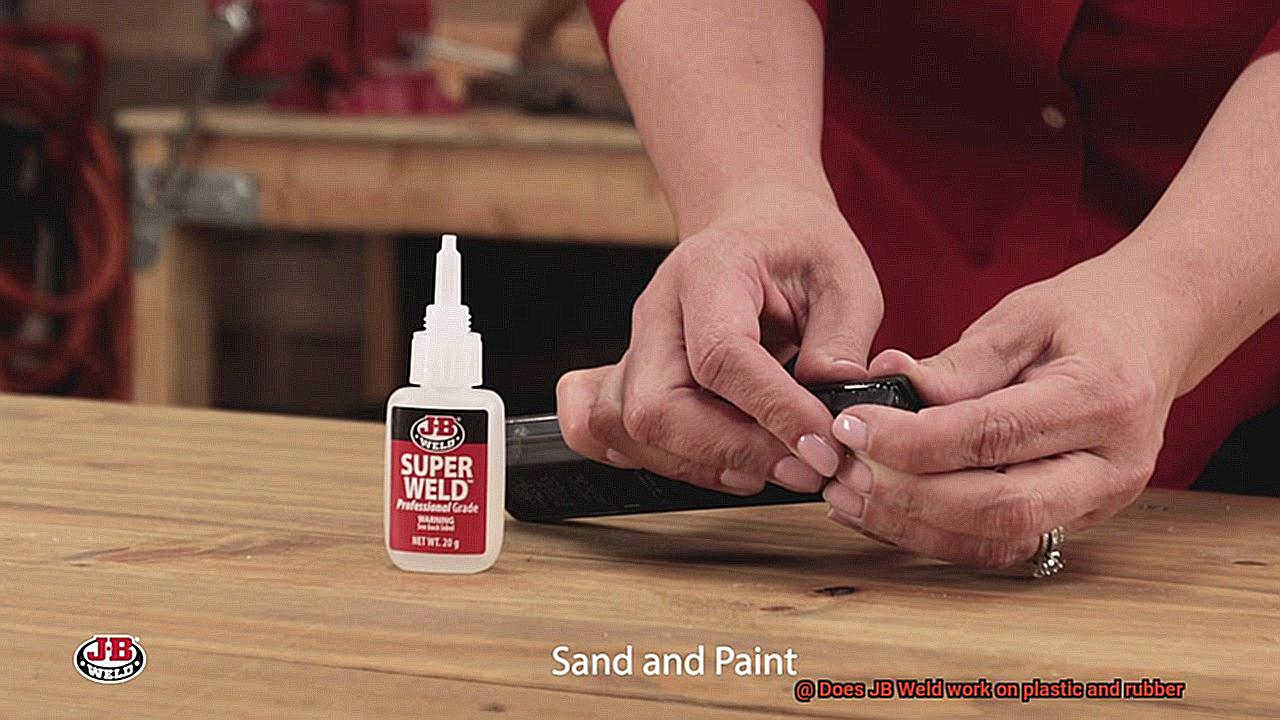
Surface Preparation:
For a successful bond, proper surface preparation is paramount. Thoroughly clean the plastic surface to remove dirt, grease, or contaminants that can hinder adhesion. A light sanding can also improve bonding.
Application Techniques:
When using JB Weld on plastic, remember that less is more. Apply thin layers of adhesive, allowing each layer to dry before applying the next one. This approach ensures a strong and enduring bond. Follow JB Weld’s instructions for optimal results.
Considerations and Limitations:
While JB Weld can be effective on certain plastics, it’s important to note its limitations. Plastics with low surface energy or those subjected to constant flexing or extreme temperatures may require alternative adhesives designed for these conditions.
Conclusion:
Does JB Weld work on plastic? Yes, with a few considerations. By understanding the plastic type, preparing the surface properly, using the right application techniques, and considering the intended use of the repaired item, you can achieve a strong and lasting bond. Always test the adhesive on a small area first and follow the manufacturer’s instructions.
Preparing Plastic for JB Weld
Fret not, because we have the ultimate solution for you – JB Weld. But before you dive into the world of plastic repairs, it’s crucial to prepare your surfaces properly. In this engaging guide, we’ll walk you through the steps to ensure a strong and enduring bond that will make your repaired plastic items as good as new.
Step 1: Cleanliness is Key
First things first, let’s get rid of any dirt, grease, or contaminants on the plastic surface. Use a mild detergent or soap and water to give your plastic item a thorough scrub using a soft cloth or sponge. Rinse thoroughly to remove any residue from the cleaning solution.
Step 2: Take it a Step Further
To achieve that flawless bond, bring out the big guns – solvents. Acetone or isopropyl alcohol are your best pals when it comes to eliminating oils, grease, and other stubborn contaminants. Soak a clean cloth with your solvent of choice and wipe down the entire surface of the plastic. Trust us; this step is worth every second.
Step 3: Know Your Plastic
Not all plastics are created equal when it comes to bonding with JB Weld. Polyethylene and polypropylene, for instance, have low surface energy and can be tricky to bond. To avoid disappointment, always check the manufacturer’s instructions or conduct a small test before applying JB Weld to these types of plastics.
Step 4: Roughen It Up
Now it’s time for some rough love. Grab sandpaper or a file and gently roughen up the plastic surface. This creates microscopic scratches that provide more surface area for the epoxy to adhere to. Be gentle, as we don’t want to damage or weaken the plastic.
Step 5: Dry, Dry, Dry.
Before applying JB Weld, make sure your plastic surface is bone-dry. Any lingering moisture can interfere with the curing process and weaken the bond. Allow the plastic to air dry or use a clean cloth or paper towel to gently dry it. Patience is key here.
Step 6: Ready, Set, Apply.
It’s finally time to bring out the JB Weld and work your magic. Follow the manufacturer’s instructions for application, ensuring you apply the epoxy evenly and avoid excessive amounts. We want a strong bond, not a sticky mess.
Step 7: Hold it Together
To ensure a seamless bond, clamp or hold the plastic parts together firmly during the curing process. This prevents any movement or shifting that could compromise the bond. Stay strong, little plastic pieces.
Step 8: The Waiting Game
Now comes the hardest part – waiting. Allow JB Weld to cure for the recommended time specified by the manufacturer.
Types of Plastics Compatible with JB Weld
When it comes to plastic, JB Weld can be a reliable option for certain types of plastics. Understanding the compatibility factors and properly preparing the plastic surface are essential for achieving a successful bond. Here are some types of plastics that are generally compatible with JB Weld:
ABS (Acrylonitrile Butadiene Styrene):
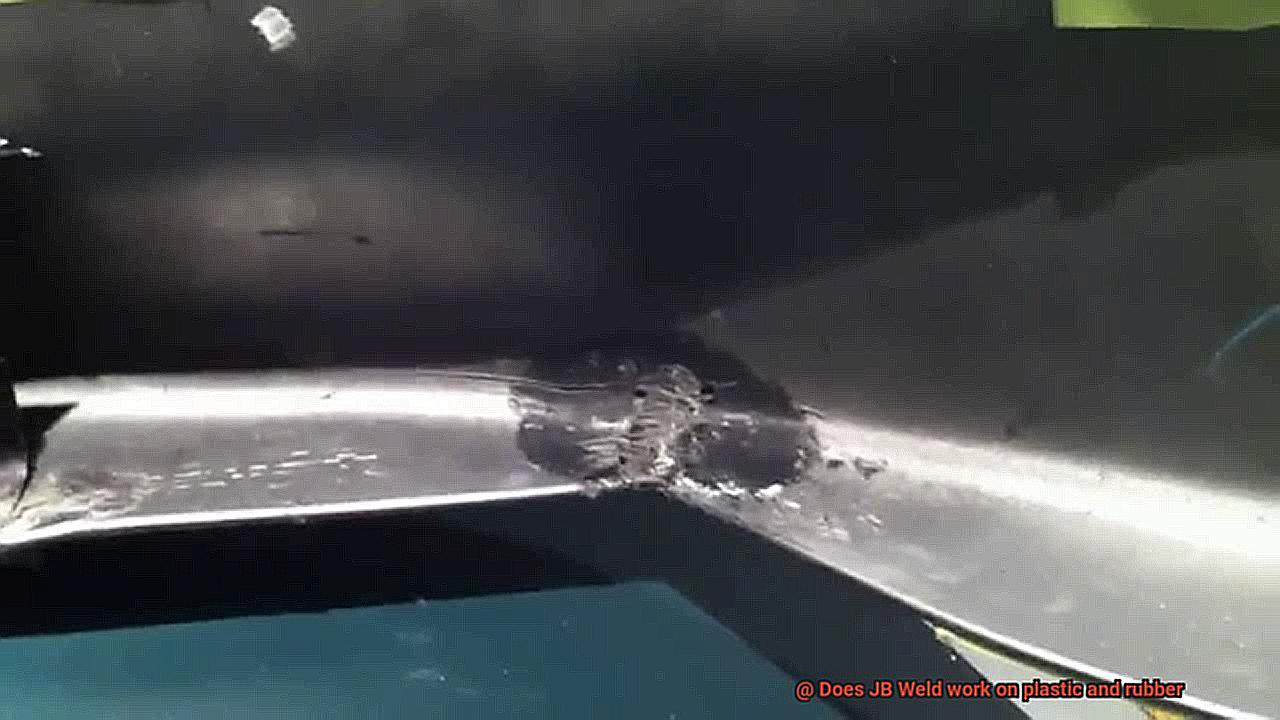
ABS is a commonly used thermoplastic known for its strength and impact resistance. It is used in various applications such as automotive parts, toys, and electronic enclosures. JB Weld can form a strong bond with ABS plastic, making it suitable for repairs or bonding projects involving this type of plastic.
PVC (Polyvinyl Chloride):
PVC is a widely used plastic material known for its durability and chemical resistance. It is commonly used in plumbing pipes, electrical insulation, and vinyl flooring. JB Weld can effectively bond with PVC, providing a reliable and long-lasting bond.
HDPE (High-Density Polyethylene):
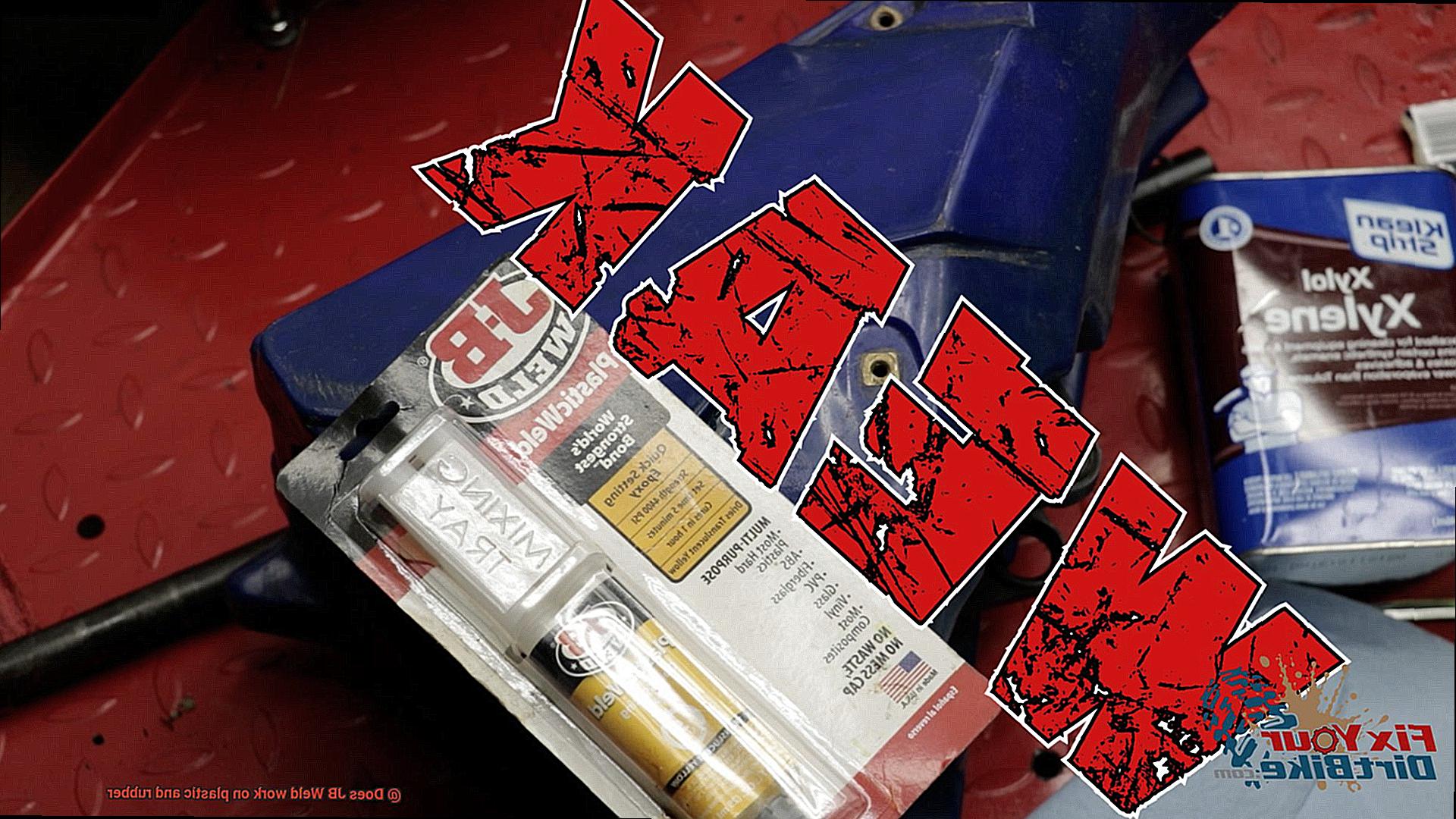
HDPE is a lightweight and strong plastic commonly used in packaging materials, bottles, and containers. While bonding HDPE with JB Weld may require some surface preparation and roughening for better adhesion, it can result in a strong bond between the two materials.
It’s important to note that not all types of plastics are compatible with JB Weld. Plastics such as polypropylene (PP), polyethylene (PE), and polystyrene (PS) have low surface energy and are difficult to bond with adhesives. If you need to bond these types of plastics, it is recommended to use specific adhesives designed for these materials.
Does JB Weld Work on Rubber?
When it comes to the question of whether JB Weld works on rubber, the answer is not as straightforward as we might hope. JB Weld is a renowned epoxy adhesive known for its strength and versatility in bonding metals, ceramics, wood, and even plastic. However, rubber presents a unique challenge for this adhesive superhero.
Rubber comes in various forms, such as natural rubber, synthetic rubber, and silicone rubber. Each type has its own distinct properties and chemical composition that can affect how well JB Weld adheres to it. Unfortunately, rubber’s soft and pliable nature does not provide the ideal surface for JB Weld’s epoxy resin to work its magic.
JB Weld is designed to create a strong and durable bond when exposed to air. It thrives on rigid materials like metal or plastic. However, when it comes to rubber, it’s a whole different ball game. The flexibility and elasticity of rubber can cause the epoxy to crack or break under stress, resulting in a weaker bond.
Now, before you give up all hope, let’s talk about some exceptions. Silicone rubber tends to play nicer with JB Weld compared to other types of rubber. This is because silicone rubber has a smooth surface and fewer additives that could interfere with the bonding process. So if you’re working with silicone rubber, there’s still hope for a stronger bond.
To increase your chances of success, proper preparation of the rubber surface is crucial. Thoroughly clean it to remove any dirt or contaminants that could hinder adhesion. Lightly sanding the surface can also create a rougher texture for better bonding. And here’s a pro-tip: using a primer specifically designed for bonding rubber can enhance the adhesion of JB Weld.
But here’s the truth – even with all these precautions, the bond between JB Weld and rubber may still not be as strong as you’d like it to be. So always test it on a small area before going all-in on a larger surface or using it for critical applications.
In conclusion, while JB Weld is a versatile adhesive, it may not be the best option for rubber surfaces. Rubber’s flexibility and unique properties make it challenging for JB Weld to create a strong and long-lasting bond. Nevertheless, with proper surface preparation, the use of a rubber primer, and realistic expectations, JB Weld can still provide some level of adhesion to rubber surfaces.
Adhesives Specifically Designed for Rubber
Rubber adhesives are the unsung heroes of the adhesive world, providing the perfect bond for all your rubber needs. From quick fixes to heavy-duty applications, there’s an adhesive specifically designed for rubber that will get the job done.
First up is the superhero of adhesives – cyanoacrylate adhesive, also known as super glue. This fast-acting adhesive forms an instant bond when it touches the rubber surface, giving you a hold that’s as strong as steel. Perfect for those small-scale repairs or quick fixes, super glue is a must-have in any toolbox.
But what if you need something more rugged? Neoprene-based adhesives are here to save the day. These flexible wonders are resistant to water, making them ideal for outdoor applications or environments where moisture might be an issue. They provide a strong and long-lasting bond that can withstand the test of time, ensuring your rubber stays put no matter what Mother Nature throws at it.
Now let’s talk silicone-based adhesives. These powerhouses offer flexibility and high temperature resistance, making them perfect for extreme conditions. Whether you’re dealing with scorching heat or freezing cold, silicone adhesives will keep your rubber bond intact. Not only that, but they’re also resistant to chemicals, UV radiation, and aging, so your bond will stay strong for years to come.
But what if you need an adhesive that can handle more than just rubber? Fear not – there are multi-purpose adhesives out there that can bond rubber to other materials like plastic or metal. These versatile adhesives have a wide range of applications and provide reliable bonds between different surfaces, giving you the freedom to tackle any project without limitations.
Before you start sticking everything together, remember a few key tips. Clean and dry surfaces are essential for a successful bond – any dirt or oils can affect the adhesive’s performance. Apply the adhesive evenly and give it enough time to cure – patience is the glue that holds it all together.
Tips for Using JB Weld on Plastic and Rubber
JB Weld is a powerful adhesive that can be used for a wide range of applications, including bonding plastic and rubber surfaces. While using JB Weld on these materials may seem challenging, with the right tips and techniques, you can achieve a strong and long-lasting bond. In this article, we will explore the key considerations when using JB Weld on plastic and rubber.
Prepare the Surfaces:
Properly preparing the plastic or rubber surfaces is crucial before applying JB Weld. Start by cleaning the surfaces thoroughly with a degreasing agent to remove any dirt, oil, or contaminants that could hinder adhesion. Ensure that the surfaces are completely dry before proceeding.
Surface Roughening:
To enhance the bond between JB Weld and plastic or rubber, consider lightly roughening the surfaces. Gently sand the area or use a wire brush to create a textured surface that allows for better grip and penetration of the adhesive. This roughening process increases the surface area available for bonding and improves overall adhesion.
Thin Layers are Key:
When applying JB Weld, remember to use thin layers instead of applying excessive amounts. Thin layers allow for better penetration into the porous surfaces of plastic and rubber, resulting in a stronger bond. Apply the adhesive evenly over the entire bonding area, ensuring complete coverage. Avoid applying too much pressure during application to prevent excess adhesive from squeezing out.
Use Clamps or Weights:
To ensure a secure bond, consider using clamps or weights to hold the bonded pieces together while the JB Weld cures. This additional support prevents any movement or separation during the curing process, resulting in a stronger and more reliable bond. The clamps or weights should be applied carefully to avoid damaging the plastic or rubber surfaces.
Avoid Extreme Temperatures:
During the curing process, it is essential to avoid exposing the bonded area to extreme temperatures. Extreme heat or cold can affect the strength and durability of the bond. Follow the manufacturer’s instructions regarding curing time and temperature limitations for optimal results. Proper curing ensures that the adhesive fully sets and achieves maximum strength.
Choose the Right Formulation:
JB Weld offers different formulations suitable for specific types of plastic or rubber. It is crucial to choose the correct formulation based on the material you are bonding. Some common formulations include JB Plastic Bonder for plastic materials and JB Weld Rubber for rubber materials. Always read the product labels and select the appropriate formulation to ensure compatibility and maximum bond strength.
Alternatives to JB Weld for Bonding Plastic and Rubber
When it comes to bonding plastic and rubber materials, JB Weld is often the go-to adhesive. However, there are times when you might need to explore other options. In this blog post, we will walk you through some fantastic alternatives to JB Weld that can provide excellent results. Let’s dive in.
Epoxy Adhesives:
Epoxy adhesives are known for their strong bonding capabilities on a wide range of materials. They come in formulations specifically designed for plastics and rubbers, ensuring optimal adhesion. However, they do have a longer curing time compared to other adhesives and may require surface preparation for the best results.
Cyanoacrylate Adhesive (Super Glue):
Cyanoacrylate adhesives, commonly known as super glue, offer a quick-drying formula that forms a strong bond. They are suitable for small projects or quick fixes. However, not all formulations are suitable for all types of plastics and rubbers, and they have limited flexibility, which may not be ideal for applications with movement or stress.
Polyurethane Adhesives:
Polyurethane adhesives provide excellent bonding strength and flexibility, making them ideal for applications with stress or movement. They are often used in the automotive and construction industries. However, they do have a longer curing time compared to some other adhesives and can be messy to work with due to their thick consistency.
Rubber-Based Adhesives:
Rubber-based adhesives, such as neoprene adhesive or silicone rubber adhesive, are specifically formulated for bonding rubber materials. They provide a strong bond while maintaining flexibility. However, they have limited versatility compared to other options and may require a longer curing time.
djtKXkTqPUI” >
Also Read: Will JB Weld Work On PVC Pipes? – The Welding Guru
Conclusion
In conclusion, JB Weld is indeed effective when it comes to bonding plastic and rubber materials. Its unique formula creates a strong and durable bond that can withstand various stresses and strains. Whether you’re repairing a cracked plastic component or reattaching a rubber seal, JB Weld provides a reliable solution.
Not only does JB Weld work on plastic and rubber, but it also offers versatility in its applications. From automotive repairs to household fixes, this adhesive can handle it all. Its ability to bond different types of plastics and rubbers makes it an ideal choice for DIY enthusiasts and professionals alike.
Furthermore, the application process is simple and straightforward. Just clean the surfaces thoroughly, apply the JB Weld adhesive evenly, and allow it to cure for the recommended time. Once cured, you can trust that your plastic or rubber repair will hold up under pressure.
So, next time you find yourself in need of a strong bond for your plastic or rubber project, don’t hesitate to reach for JB Weld. With its proven track record and reliable performance, you can have confidence in its ability to get the job done right.

